While many are enjoying summer break, the classics library remains open to visiting scholars and others. This summer, world-renowned papyrologist UC Professor Peter van Minnen has been hosting the Papyrology Summer Institute, held under the auspices of the American Society of Papyrologists. This 5 week-long intensive program has comprised lectures on topics such as petitions, magical papyri, materiality (the archaeology of papyri as objects) by scholars from all over the world in the morning or research and readings in the library followed by examination of papyri on loan from the University of Michigan in the lab (Blegen 320) in the afternoon. Some of the participants could already read Egyptian hieroglyphs, Coptic, and Demotic coming into the program, and all could read Greek and Latin. Each participant works on 3-4 papyri. Their findings are subsequently published in the Bulletin of the American Society of Papyrologists. In addition to the papyri, each participant examines one ostracon (a piece of pottery with writing on it), the publication of which will be as a group.
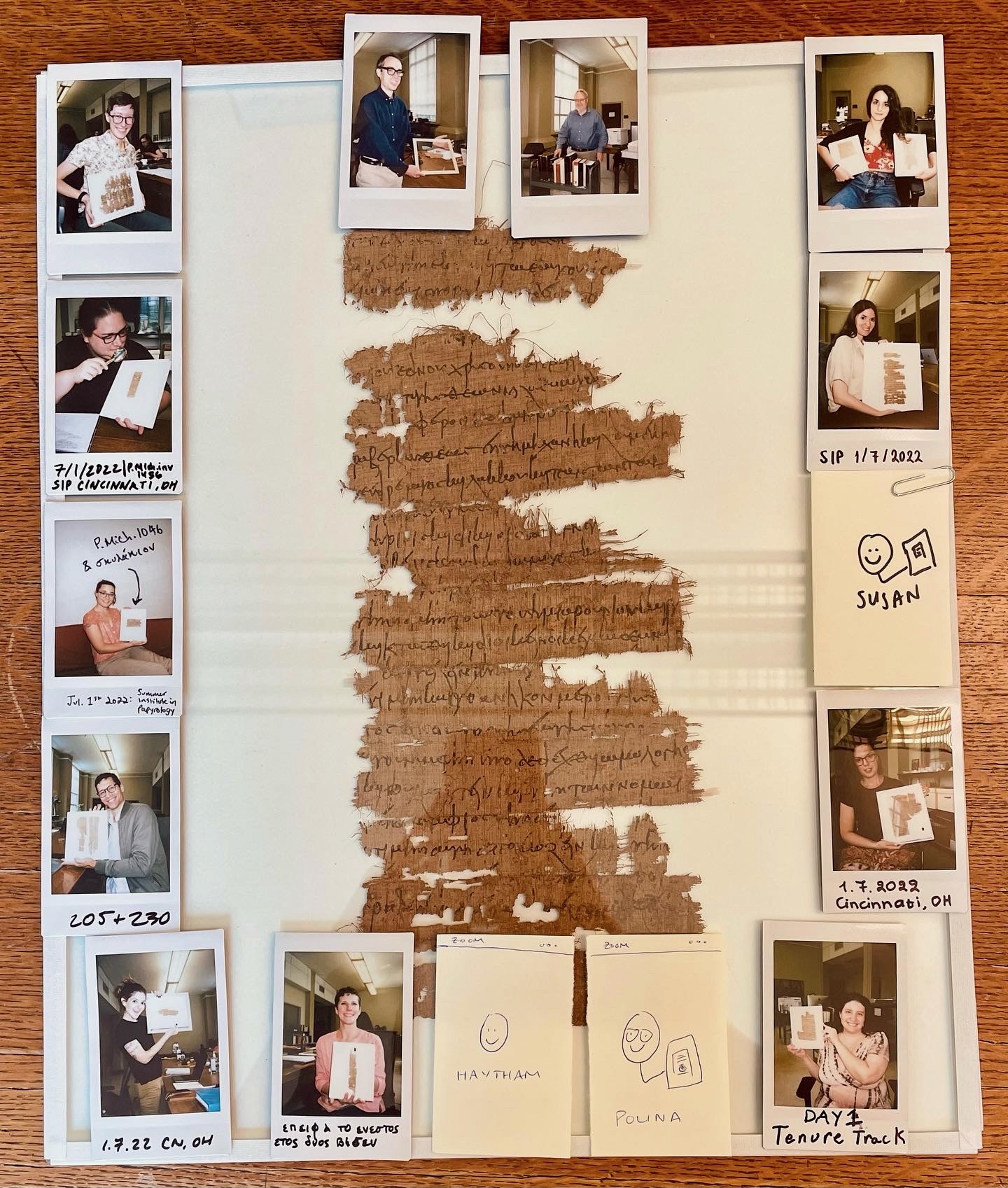
Polaroid collage of participants in the 2022 Papyrology Summer Institute at UC by one of the participants, Dr. Ella Karev, Postdoctoral Teaching Fellow, Near Eastern Languages and Civilizations, University of Chicago.
One of the participants, Leah Grams, a graduate student in ancient history and Mediterranean archaeology at UC Berkeley, has been interested in papyrology since high school. She applied to the Papyrology Summer Institute as an undergraduate but was not accepted until she began grad school. She says that she is thrilled to be taught by two of the foremost papyrus experts in the world, Peter van Minnen, UC, and Michael Zellmann-Rohrer, FU Berlin, and to have met other papyrologists, “people like me, who have become my mentors, colleagues, and friends for life.”
Leah has especially appreciated learning about papyri as objects, handled by ordinary people and comprising their writings depicting daily life. For example, a question which she has tried to answer, which is not as simple as it may seem, is what kind of “pen” was used and if the shape and material of this “pen” affected the style of handwriting. A not so “glamorous” fragment may state that three bushels of barley cost 5 drachmas. However, such a fragment contains much important information, Leah explains, such as what foods people ate, how much barley, in this case, cost, how much 5 drachmas were worth, etc. The magical papyri and especially curses she also found interesting. She is now more convinced than ever that papyrology is the path for her, a sentiment shared by Claire Koen, another participant and a 5th-year theology graduate student at Fordham.
Claire has been particularly interested in the magical papyrus lectures as her research focuses on 2nd-5th century monastic writings in Egypt and demonology. The time period of the papyri examined in the 2022 Papyrology Summer Institute is Ptolemaic, especially Roman, and early Byzantine, which fits Claire’s research well. Like Leah, Claire has also appreciated being able to examine documentary papyri listing everyday matters. She mentions, for example, a list of sheep and goats which someone registers for tax purposes, including the name of the shepherd, in which pasture the sheep and goats graze, etc., and another text about wheat distribution, and a third comprising a Roman census report. Claire is also excited about having met so many excellent students and scholars from all over the world and from many different disciplines. She feels that she has learned a lot and gained new perspectives from working with scholars from many different backgrounds and institutions. She has also appreciated being able to work in the library’s reading room with large tables to spread out and she likes the book stacks which she describes as “a bit creepy but also unique.” Participants from European libraries comment on the benefits of having open stacks as opposed to the closed stacks of most European libraries where you request library items which library staff then retrieve.
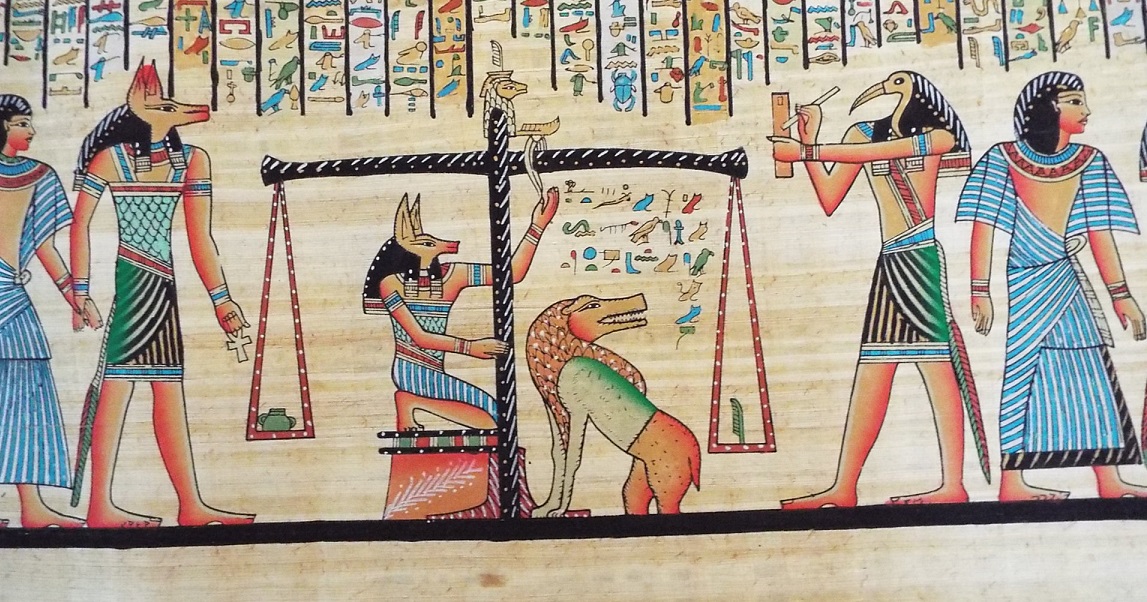
This modern-day papyrus in the Burnam library represents what most people think of when they hear the word papyrus. However, even though the papyrus plant grew along the Nile, Greeks and Romans also used papyrus for centuries. The papyrus trade was a major export-import business in antiquity. The famed library in Alexandria housed papyrus rolls, not books. The vast majority of papyrus and papyrus fragments found in Egypt are not Egyptian Books of the Dead, but rather mundane everyday life documents in Greek such as sales receipts, legal petitions, and other legal documents such as wills and property deeds, letters regarding trade and agricultural matters, as well as magical formulae for good luck, health, and love, and curses against something or someone, in addition to Greek poetry and prose, e.g., those contained in the so called Oxyrhynchus Papyri. Papyrus, the ultimate recycling material, had multiple applications as it was used not only to write on, but also as building material, timber, for boats, material for sandals, for rope, and for baskets. It was also used in medicine. According to Dioscurides’ De Materia Medica (about this work, see a previous blogpost in connection with an exhibition on ancient medicine), it was used to treat wounds: “Papyrus that is burned to ashes keeps in check sores in the mouth and everywhere else; but papyrus roll that was set on fire does this kind of thing better” (I, 86), which makes one wonder how many scrolls of papyrus may have been lost to us for this reason.
The Papyrology Summer Institute, which hosts advanced graduate students and junior faculty in classics, ancient history, Egyptology, archaeology, religious studies, Judaic studies, biblical studies, and related fields, occurs biennially and was first held in 2003 at Yale University. The Institute in 2005, was held at UC. It has also been hosted by Berkeley, Columbia, Stanford, Michigan, Brigham Young, Chicago, Princeton, and Washington University in St. Louis.
This year’s Summer Institute hosts 13 participants from institutions all over the world.
Antonia Apostolakou (Ghent University)
Spyridoula Bounta (Trier University)
Cassandra Casias (Duke University)
Leah Grams (University of California, Berkeley)
Valentina Iannace (Manchester University)
Jordan Johansen (University of Chicago)
Ella Karev (University of Chicago)
Claire Koen (Fordham University)
Haytham Qandeil (Ain Shams University)
Susan Rahyab (Columbia University)
Katherine (Kate) Stevens (Rutgers University)
Henry Upton (University of Michigan)
Polina Yordanova (Helsinki University)
Dr. Michael Zellmann-Rohrer (Freie Universität, Berlin) is this year’s guest Professor. Professor Zellmann-Rohrer is co-editor of vol. 86 of the Oxyrhynchus Papyri (2021) and Traditions in Transmission: The Medical and Magical Texts of a Fourth-Century Greek and Coptic Codex (Michigan Ms. 136) in Context. Archiv für Papyrusforschung Beiheft 47 (2022).
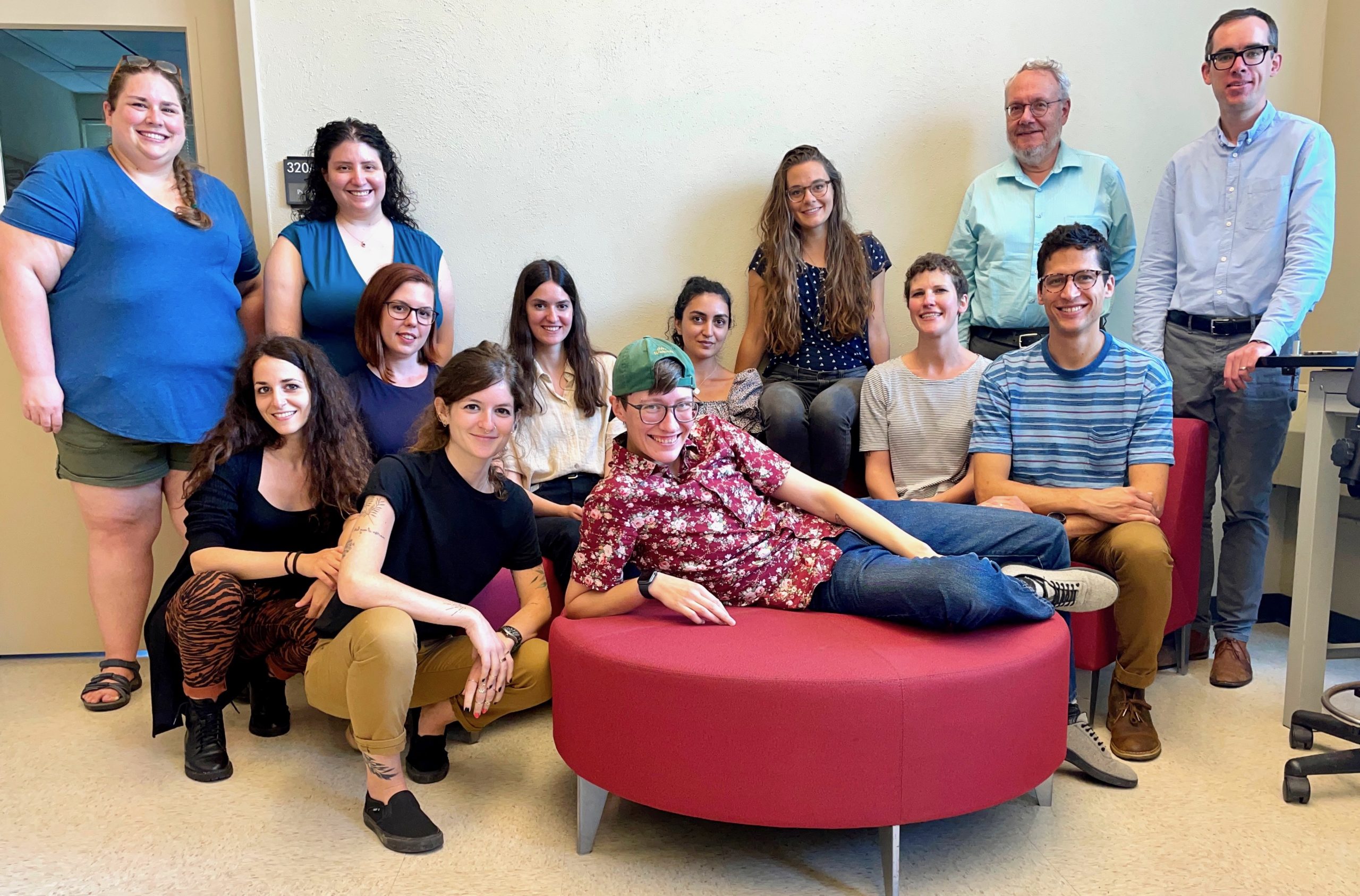
Teachers and students in the 2022 Papyrology Summer Institute. Photo by Ella Karev.
(L-R) Back row, standing: Jordan Johansen, Cassandra Casias, Peter van Minnen, Michael Zellmann-Rohrer.
(L-R) Middle row, on couch: Valentina Iannace (kneeling), Spyridoula Bounta, Antonia Apostolakou, Susan Rahyab, Leah Packard-Grams, Claire Koen, Henry Upton.
(L-R) Front: Ella Karev, Kate Stevens (on cushion).
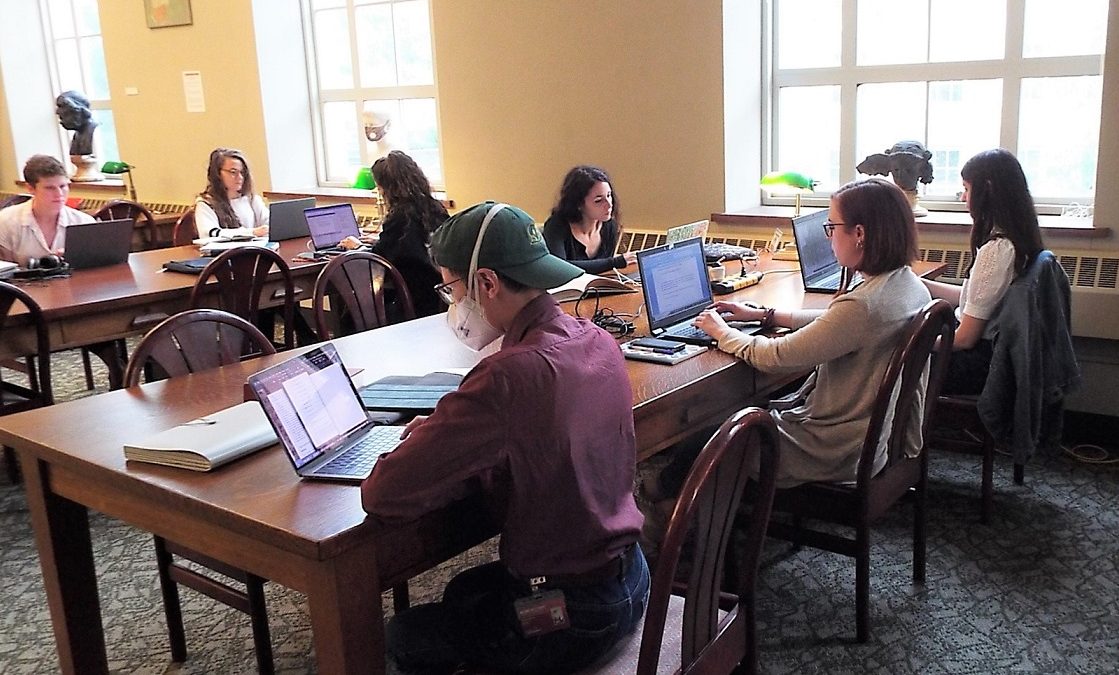
Participants in the 2022 Papyrology Summer Institute studying secondary sources in the library’s main reading room.

The UC hosting professor, Peter van Minnen, has a long list of publications comprising more than 200 books and scholarly journal articles, book chapters, conference proceedings, Festschriften, etc. He is also the editor of the Bulletin of the American Society of Papyrologists https://quod-lib-umich-edu.uc.idm.oclc.org/b/basp/ and https://poj-peeters-leuven-be.uc.idm.oclc.org/content.php?url=journal&journal_code=BASP . Prior to coming to UC, Professor van Minnen taught in the Papyrological Institute at Leiden University in his original homeland, and at two institutions with some of the largest collections of papyri in the United States, Duke University and the University of Michigan . Most of these institutions’ papyrus collections have been digitized. Professor van Minnen has also lectured all over the world, for example, at the universities of Athens, Vienna, Oxford, Chicago, Warsaw, and many more.
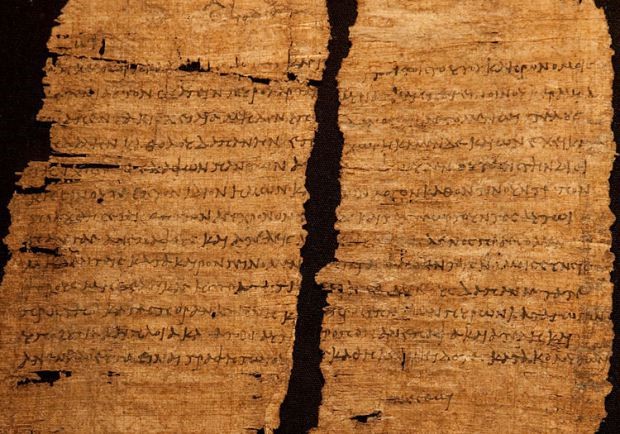
In 2000-2001, Professor van Minnen created a world sensation by deciphering a Greek word meaning “make it so” on a papyrus fragment in the Ägyptisches Museum und Papyrussammlung in Berlin (seen above) as most likely having been written in the hand of none other than the famous Pharaoh Cleopatra VII, dated to February 23, 33 BCE. The text appears to be a royal ordinance granting tax exemption to an associate of Mark Antony.
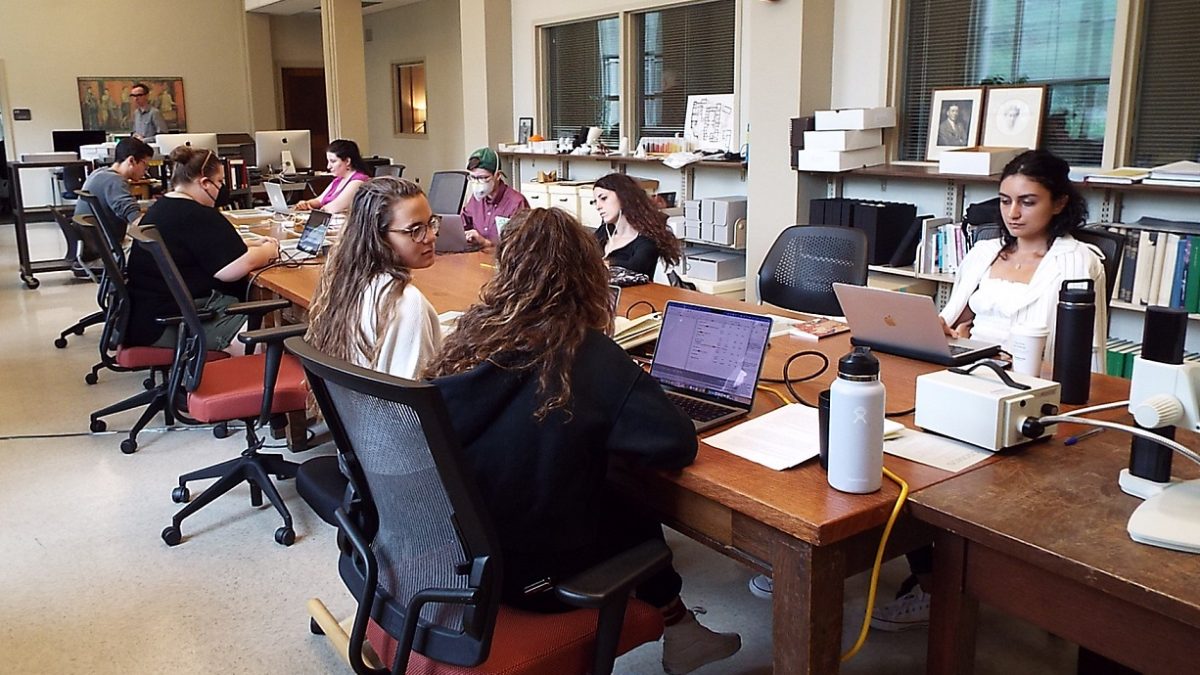
Afternoon lab work deciphering papyrus fragments.
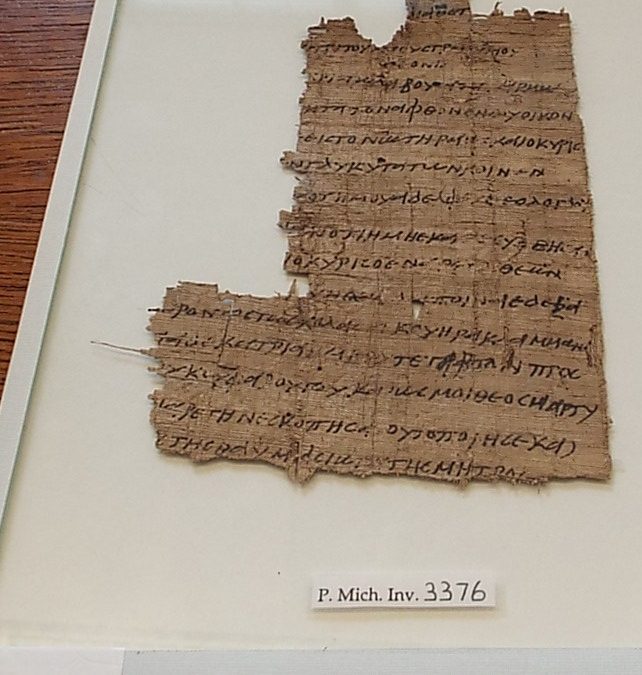
This is one of several papyrus fragments from the UMich collection which the participants are examining.
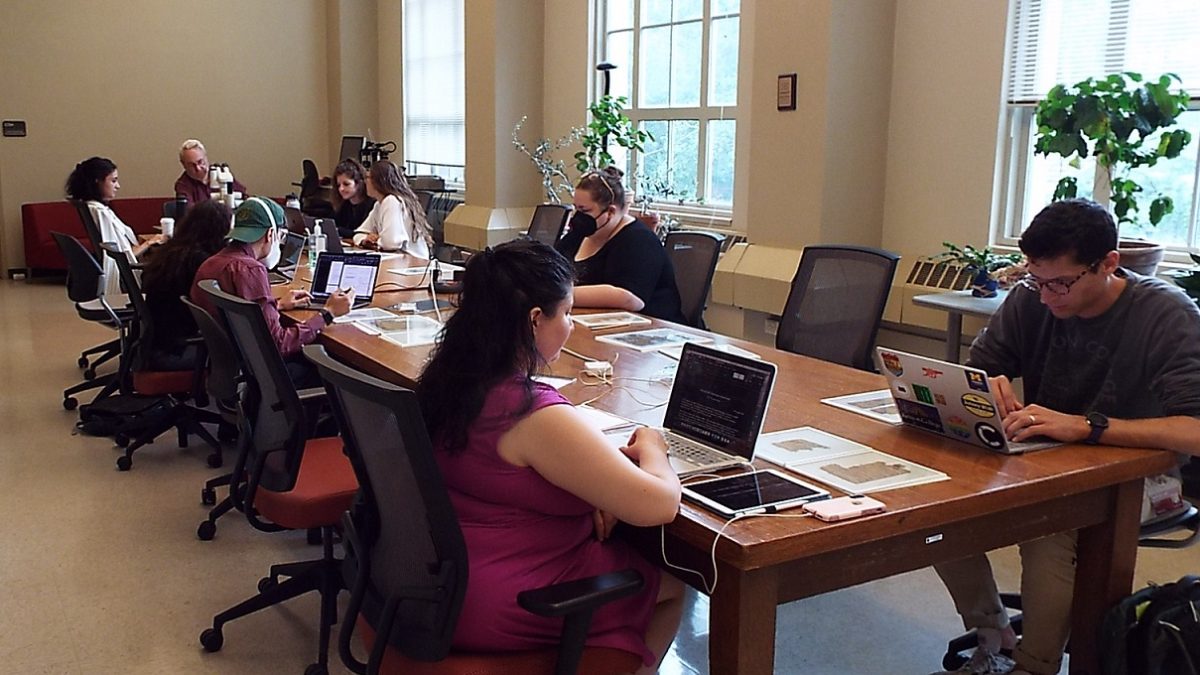
Professor van Minnen is at the top of the table examining papyri through a microscope.

Doctoral student Leah Grams is in the upper right.
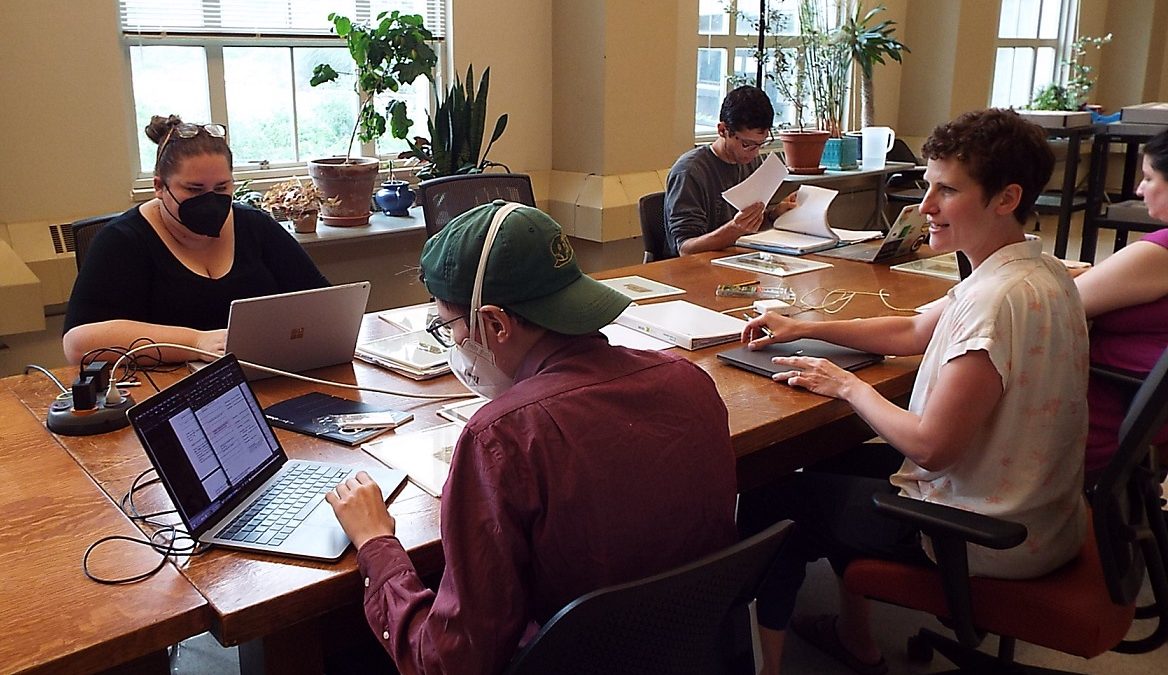
Doctoral student Claire Koen is in a white short-sleeved blouse.
If your interest in papyrology has been peaked, Professor van Minnen has created and maintains a comprehensive checklist of reading materials in the John Miller Burnam Classics Library. For additional materials, consult the subject guide on papyrology .
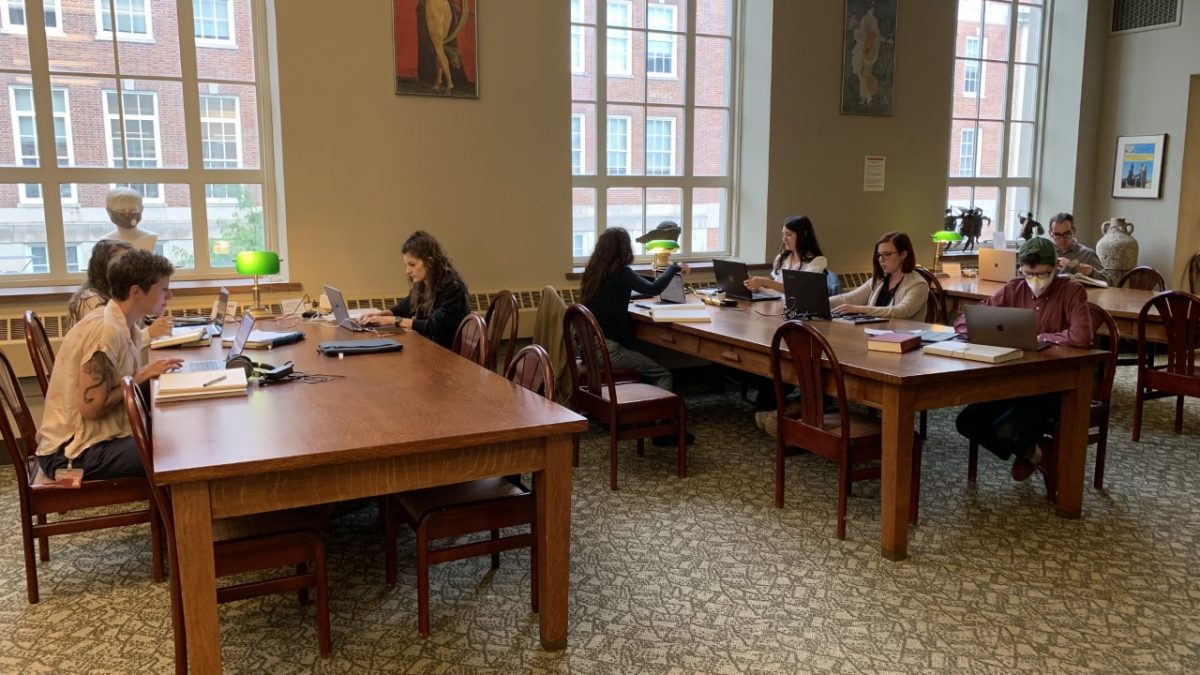
It has been lovely to see so many serious, dedicated, and humble scholars at any one time and daily in the library’s main reading room this summer. I am hoping that the next time UC hosts this program the library will be able to offer the participants an epigraphy and papyrology room, similar to the recently created palaeography room.
The photos in the reading room and lab were taken by Mike Braunlin, bibliographer, and Andrew Rivadeneira, student worker and now a UC classics alumnus. Unfortunately, Andrew is leaving the library at the end of next week. He will be going to grad school in classics at the University of Colorado Boulder. Although he will be greatly missed, we wish him all the best!
